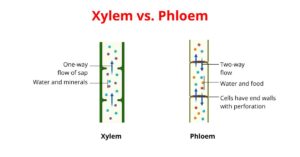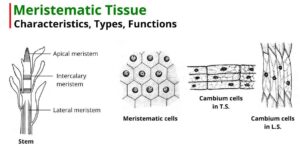
Apomixis in Plants
Apomixis is a type of asexual reproduction in plants, where seeds are produced without fertilization or meiosis. Types of Apomixis Apomixis is generally classified based on of embryo development, frequency,…
Plant physiology is a branch of botany that studies the fundamental processes, functions, and behaviour of plants.
Plant anatomy is the study of the internal structure of plant organs, especially their tissue and cell structures.

Apomixis is a type of asexual reproduction in plants, where seeds are produced without fertilization or meiosis. Types of Apomixis Apomixis is generally classified based on of embryo development, frequency,…

Xylem and phloem are the complex tissues. They constitute the component parts of the vascular bundles. Xylem and phloem both have distinct functions and characteristics. Xylem Xylem is a vascular…

Sclerenchyma is a type of simple permanent tissue that provides structural support to the plant. It consists of thick-walled, lignified sclerenchyma cells. The cells mostly lack protoplasm at maturity and…

Collenchyma is a simple permanent tissue composed of living cells with thickened walls. It is a part of the ground tissue and provides support and mechanical strength to the newly…

Parenchyma is a simple permanent tissue that makes up large portions of various plant organs. It consists of thin-walled living parenchymatous cells. The word parenchyma comes from the Greek words…

Meristematic tissue is a type of plant tissue in which the cells divide continuously and help in plant growth. The meristematic tissue is also known as a meristem. It is…